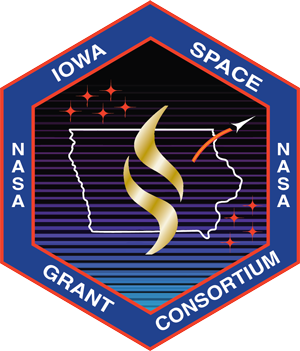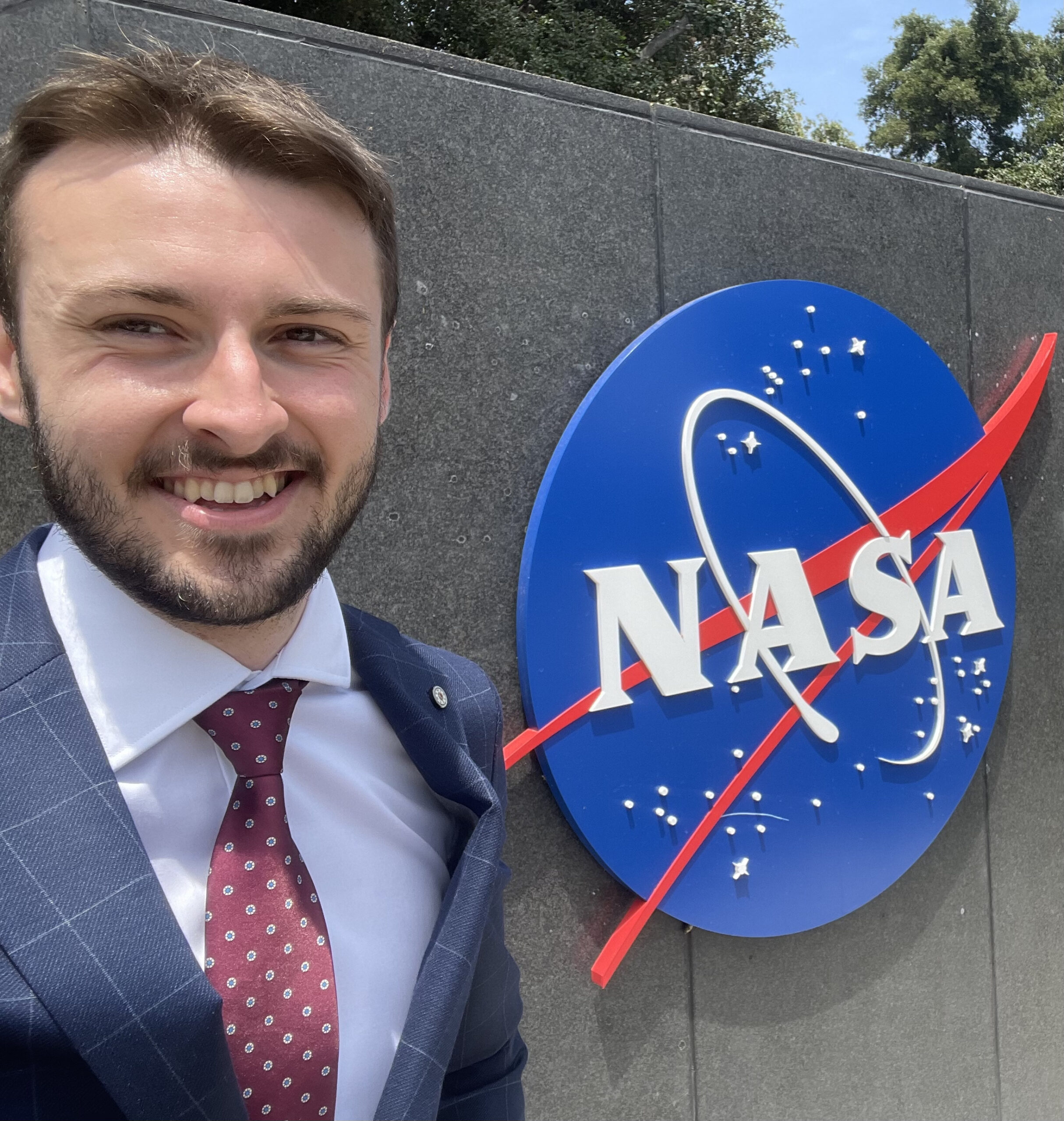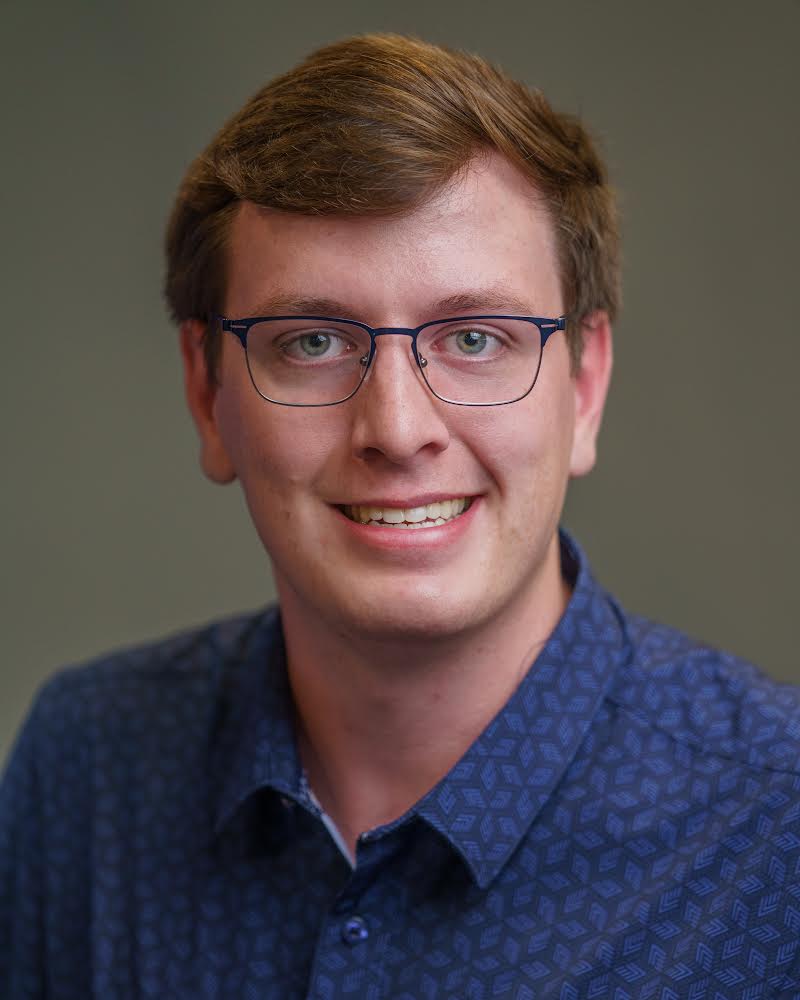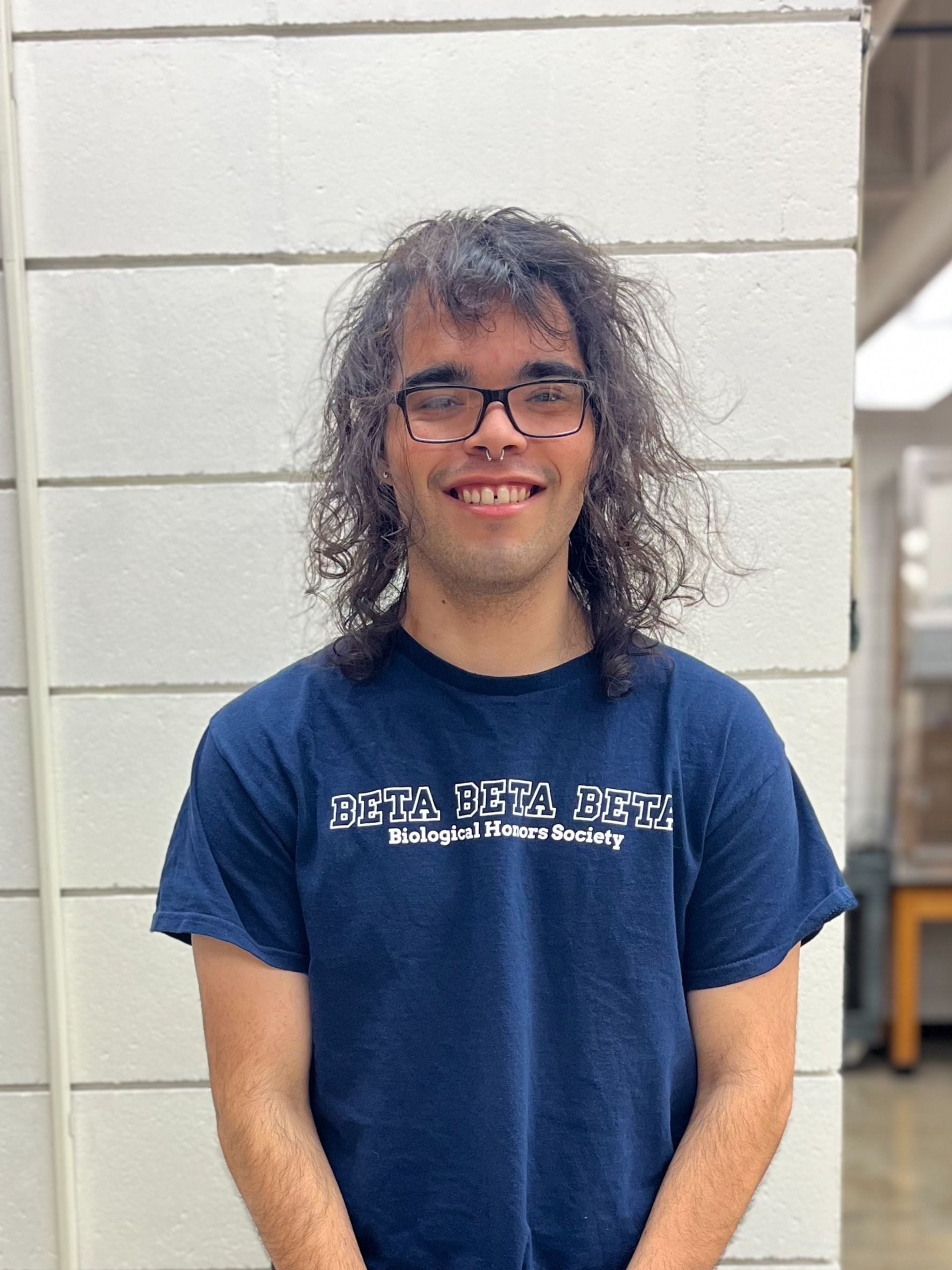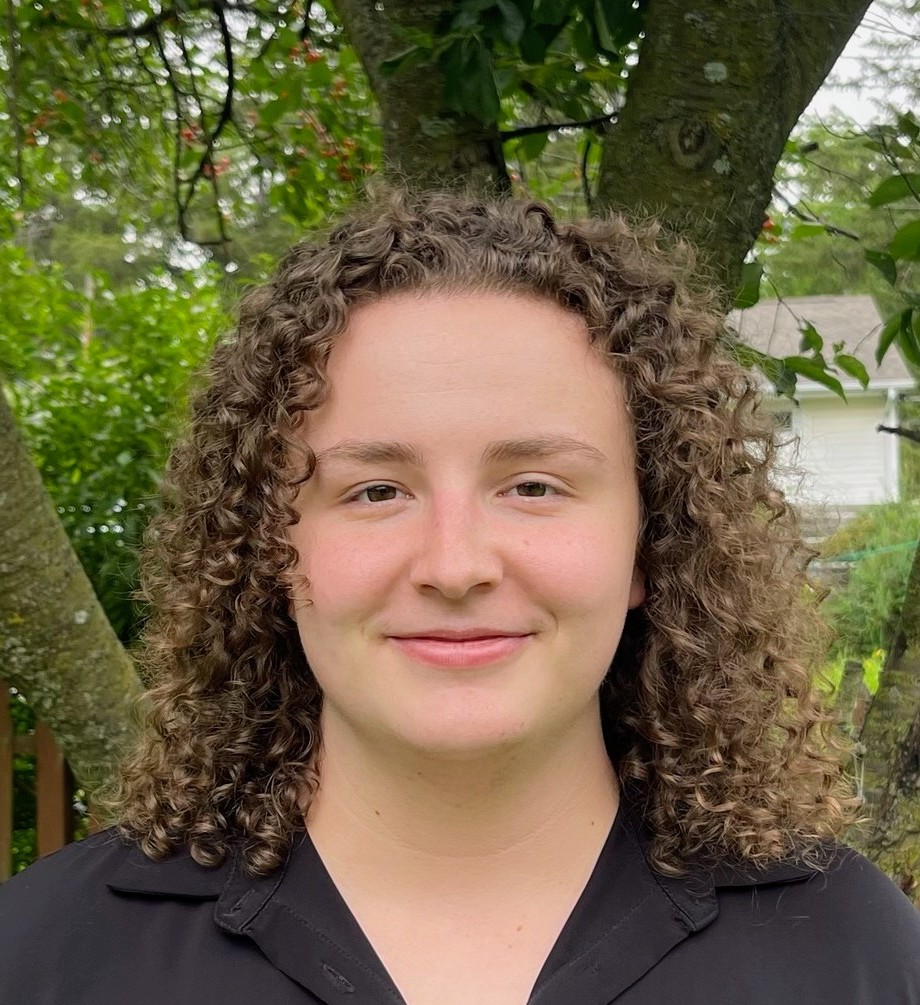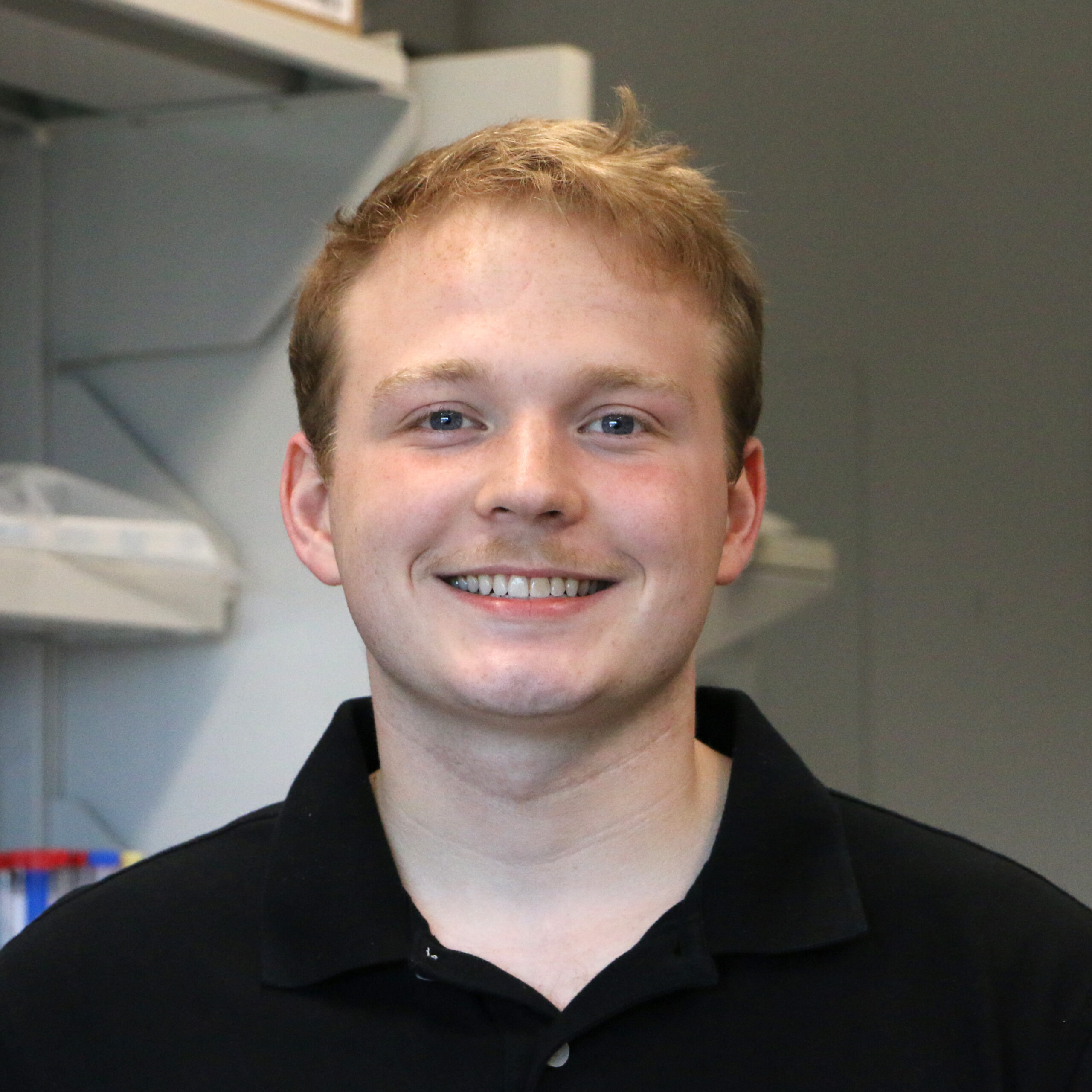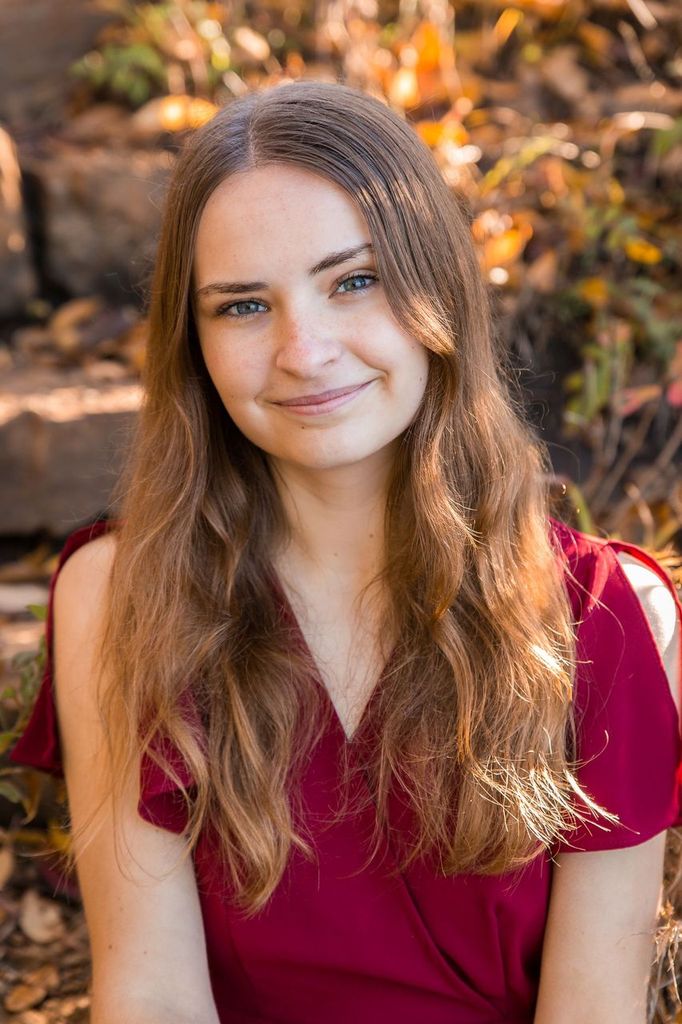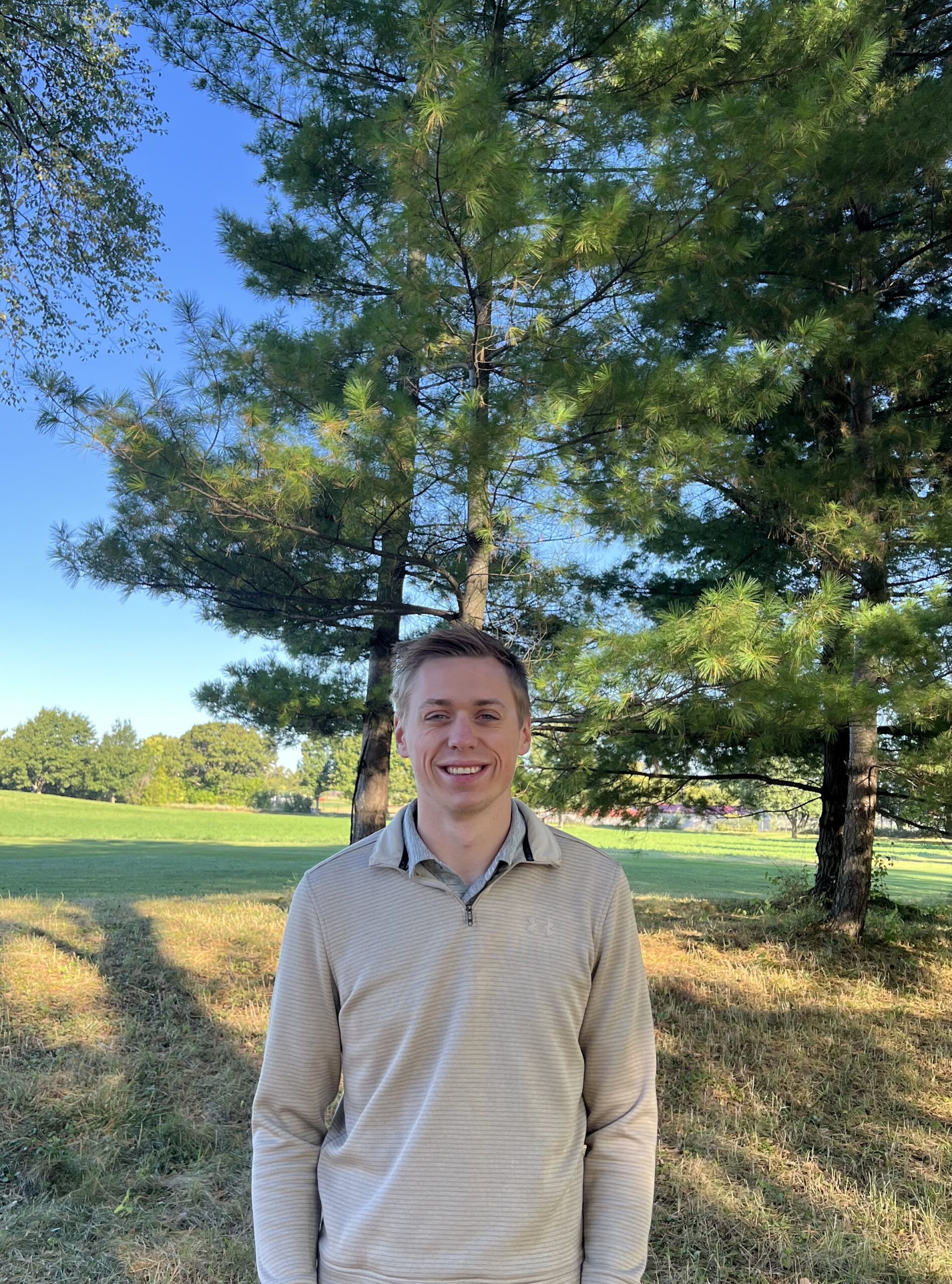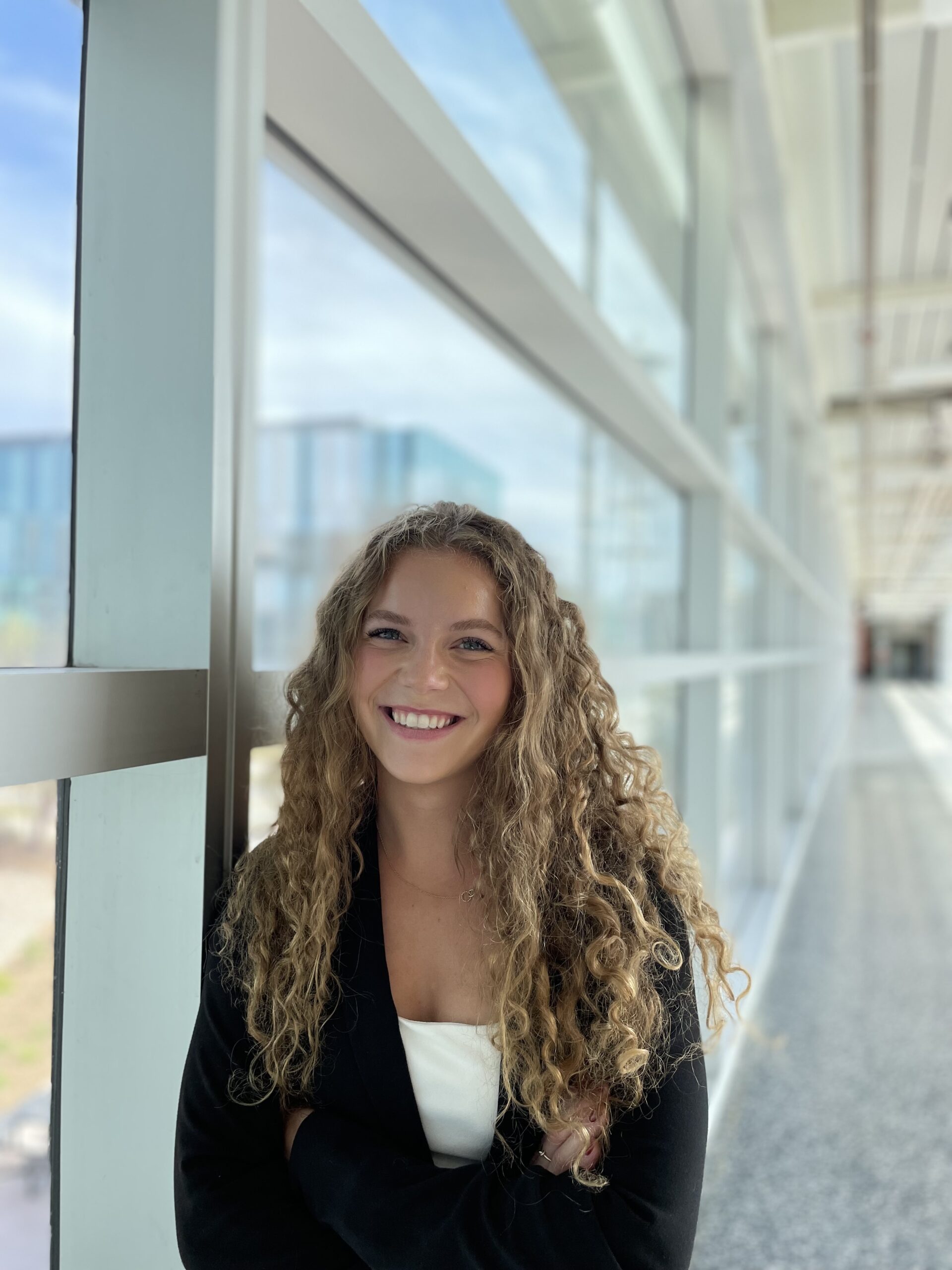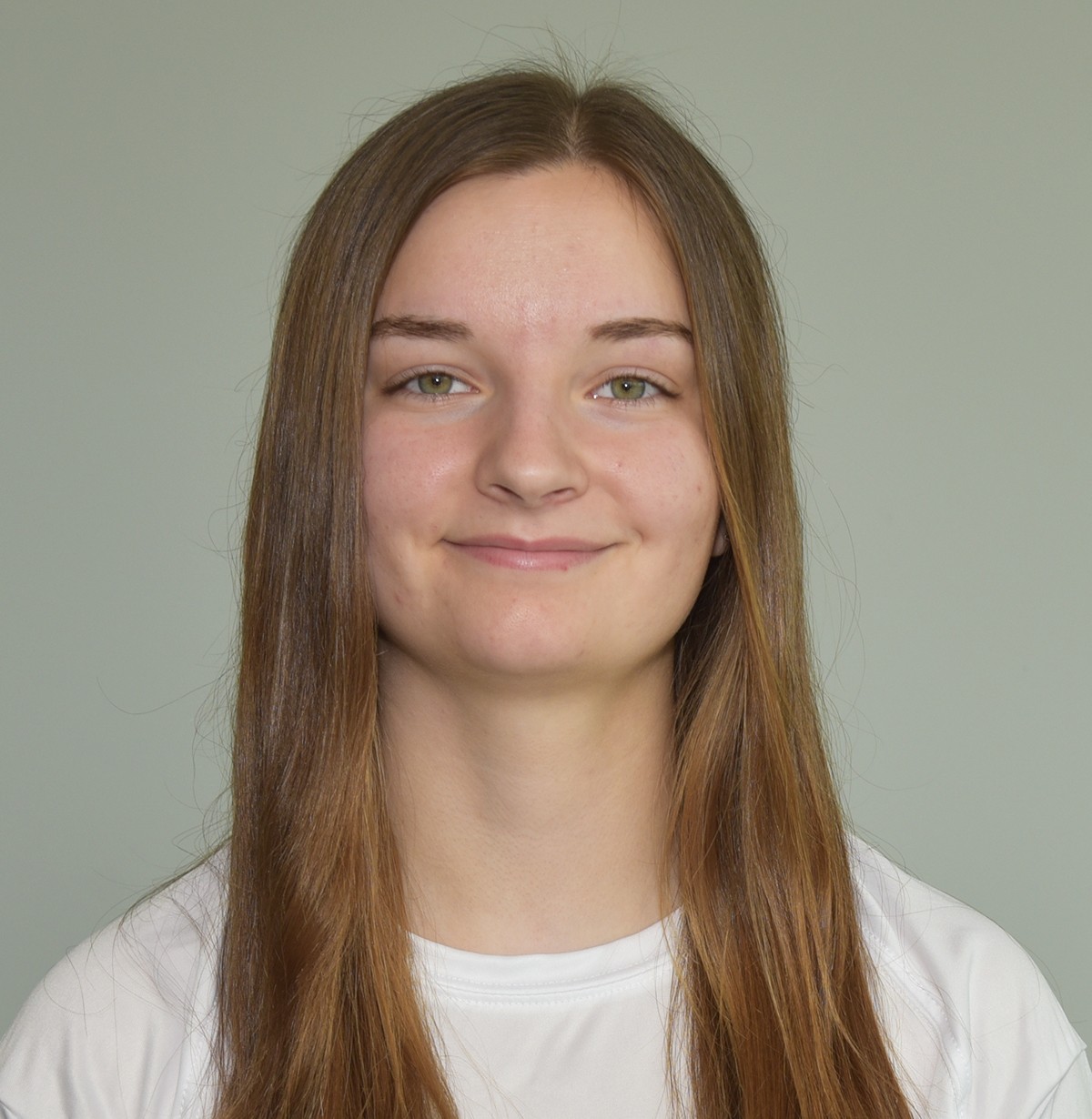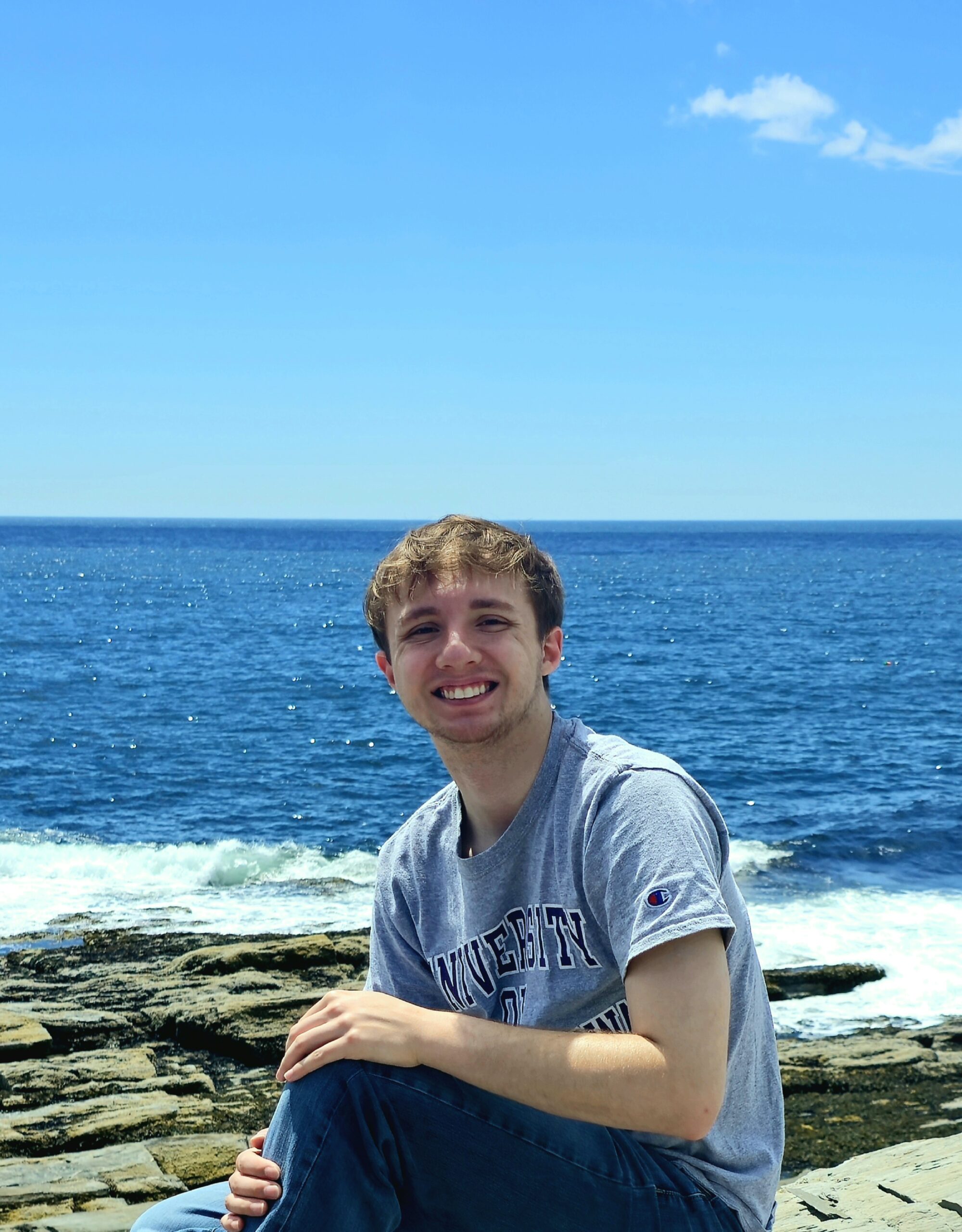Pacti is a design-time tool for engineers that lets them create Assume Guarantee contracts with components in their system. Currently used by NASA and many others. R2U2 or the Realizable Responsible Unobtrusive Unit is a very powerful runtime verification tool currently used by NASA and others that is a mission time tool. The integration here is to have R2U2 monitors generated from the contracts generated by Pacti. This allows for verifying the system operates in real-time exactly the way the engineer designed it. Without the need to learn a whole new formal methods language and how to use a new tool. By empowering a broader range of users, this tool has the potential to detect mission-critical issues early, reducing the risk of mission failure.
Stuart Leland – Iowa State University
My research project goal is to produce a glassy solid electrolyte (GSE) that is stable and competitive with currently available liquid-based electrolytes. These GSEs in next-generation batteries present a safer, higher-performance alternative to liquid electrolytes, which can then be used in demanding environments, including vehicular and space technologies. The project’s initial scope focused on determining how to best design a GSE for bulk processing, which included developing a method to characterize the thin film drawability of GSEs utilizing crystallization and viscosity models. Once the metrics for drawability were determined, GSE compositions were explored to synthesize a viable candidate that met the drawability metric without compromising the ionic conductivity and stability of the GSE. Continuous efforts have been made to further understand the structure of the produced GSEs and their relationship to beneficial properties, focusing on spectroscopic, electrochemical, and thermal characterization methods. Key structural units have been identified and are being iteratively targeted in candidate GSEs to refine their performance further.
Treytun Garcia – University of Northern Iowa
My research project is genetically mapping and characterizing the microbial population of Wind Cave National Park, SD as an extreme subterr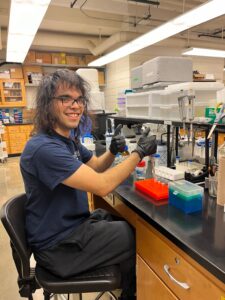 ain environment and possible analog for extraterrestrial life. I am focused on archaea because many known species within this domain have the ability to survive in extreme environments. Our knowledge of archaea and their distribution in the environment is severely lacking when compared to any other domain of life. Using genetic sequencing and analysis, I am creating a genetic map of the microbes in the cave relating environment to species distribution and evolution. Currently, I am preparing to create phylogenetic relationships between microbes from sample locations throughout the cave system. I will also be characterizing the metabolic capabilities of these microbes to understand how they can survive in this extreme environment. This project aligns with the NASA Science Directorate of promoting scientific research enabled by space exploration to better understand our universe, including the possiblity of life elsewhere. By studying life on our planet, like is found in Wind Cave, we can better understand the requirements for life. Wind Cave provides an opportunity to study life in an extreme environment similar to extraterrestrial conditions. Low nutrient environments like those in the cave describe early Earth where life was able to persist and may also describe extraterrestrial conditions, so my project is applicable to the search for life beyond Earth.
ain environment and possible analog for extraterrestrial life. I am focused on archaea because many known species within this domain have the ability to survive in extreme environments. Our knowledge of archaea and their distribution in the environment is severely lacking when compared to any other domain of life. Using genetic sequencing and analysis, I am creating a genetic map of the microbes in the cave relating environment to species distribution and evolution. Currently, I am preparing to create phylogenetic relationships between microbes from sample locations throughout the cave system. I will also be characterizing the metabolic capabilities of these microbes to understand how they can survive in this extreme environment. This project aligns with the NASA Science Directorate of promoting scientific research enabled by space exploration to better understand our universe, including the possiblity of life elsewhere. By studying life on our planet, like is found in Wind Cave, we can better understand the requirements for life. Wind Cave provides an opportunity to study life in an extreme environment similar to extraterrestrial conditions. Low nutrient environments like those in the cave describe early Earth where life was able to persist and may also describe extraterrestrial conditions, so my project is applicable to the search for life beyond Earth.
Mia Scoblic – University of Iowa
This project seeks to enhance air traffic safety and efficiency by developing predictive algorithms for the integration of Unmanned Aircraft Systems (UAS) and manned aircraft near airports. As air traffic increases, the interaction between manned and unmanned aircraft becomes a pivotal challenge, especially during landing phases. Our project will create mathematical models and algorithms that forecast the behaviors of these aircraft under various operational scenarios, thus preventing potential conflicts and optimizing flight patterns. We will focus on the theoretical aspects of motion planning, drawing from the established “rules of the road” in aviation to formulate predictive behaviors. These algorithms will be implemented in simulation environments to test their efficacy in real-time airspace management, comparing their performance against existing traffic control methods. This research has the potential to improve safety margins and to increase the throughput of aircraft landings, significantly enhancing operational efficiency at congested airports.
This project aligns with the NASA Mission Directorate in several areas: By developing predictive algorithms that integrate UAS and manned aircraft operations near airports, we optimize flight patterns and increase landing throughput, addressing ARMD’s goal of enhancing air traffic management systems. We create models to predict and manage interactions between aircraft during critical landing phases, aiming to prevent conflicts and enhance safety. Our research on motion planning for UAS, tested in simulations, aligns with ARMD’s efforts to ensure safe UAS operations alongside manned aircraft. Weekly meetings with NASA Langley foster innovation and ensure our research aligns with advanced aviation technology developments.
Kyle Balk – University of Iowa
My research project focuses on the use of gas-entrapping materials (GEMs) to enhance hyperthermic intraperitoneal chemotherapy (HIPEC) for ovarian cancer treatment. HIPEC, while effective, can lead to abdominal adhesions, or scar-like tissues that form between organs and the abdominal wall. These adhesions cause post-operative challenges and may result in lifelong bowel obstructions and infertility. To address this, we explore the use of carbon monoxide (CO) GEMs, delivered intraperitoneally as foams or hydrogels. CO is known for its immune-modulating effects at sublethal doses. By administering CO-GEMs during HIPEC, we aim to reduce abdominal adhesion formation in HIPEC patients. Excitingly, our novel GEMs have potential for use in a variety of fields beyond medicine. GEMs offer lightweight, flexible formulations that are well-suited for space missions. Their ease of administration, tunable gas delivery, and FDA Generally Regarded As SAFE (GRAS) matrix make it possible to store various gas types and deliver gas to biological systems over short and long-term durations. Specifically, our GEMs have been proven to hold 1 milligram gas/gram of foam highlighting their gas storage ability. Lastly, our GEMs have demonstrated wound healing in properties in preclinical models, which could be beneficial for astronauts during space travel. By leveraging GEMs, not only can we enhance HIPEC treatment, but we also provide support for space exploration.
Courtney Smith – Drake University
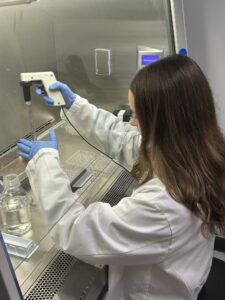 It has been determined that astronauts have elevated levels of cortisol from external stressors such as microgravity, which can result in the suppression of the immune system. As such, opportunistic infections, such as adenovirus (AdV) and cytomegalovirus (CMV), can take hold and cause serious disease. Filociclovir (FCV) is a novel compound that demonstrates activity against both CMV and AdV. The mechanism of action of FCV against CMV is virus-specific phosphorylation to a monophosphate followed by endogenous cellular phosphorylation to a triphosphate. The triphosphate inhibits the CMV polymerase resulting in inhibition of viral genome synthesis. Since both CMV and AdV encode a DNA polymerase (and these polymerases share a high homology), the mechanism of action of FCV against AdV was originally hypothesized to be the same as that against CMV. To test this, FCV was incubated with AdV-infected cells to determine the level of triphosphate during one virus replication cycle. Unlike CMV-infected cells incubated with FCV, no triphosphate levels were detected in AdV-infected cells. We, therefore, conclude that FCV has a different and distinct mechanism of action against AdV compared to the mechanism of action against CMV. As such, we will determine the mechanism of action of FCV against AdV by: 1) examining the chemical constituents necessary for FCV to elicit an anti-viral effect (structure-activity relationship), 2) examining the metabolism of FCV in both CMV- and AdV-infected cells, and 3) develop a FCV-resistant virus as a means to determine the exact molecular target of FCV in AdV.
It has been determined that astronauts have elevated levels of cortisol from external stressors such as microgravity, which can result in the suppression of the immune system. As such, opportunistic infections, such as adenovirus (AdV) and cytomegalovirus (CMV), can take hold and cause serious disease. Filociclovir (FCV) is a novel compound that demonstrates activity against both CMV and AdV. The mechanism of action of FCV against CMV is virus-specific phosphorylation to a monophosphate followed by endogenous cellular phosphorylation to a triphosphate. The triphosphate inhibits the CMV polymerase resulting in inhibition of viral genome synthesis. Since both CMV and AdV encode a DNA polymerase (and these polymerases share a high homology), the mechanism of action of FCV against AdV was originally hypothesized to be the same as that against CMV. To test this, FCV was incubated with AdV-infected cells to determine the level of triphosphate during one virus replication cycle. Unlike CMV-infected cells incubated with FCV, no triphosphate levels were detected in AdV-infected cells. We, therefore, conclude that FCV has a different and distinct mechanism of action against AdV compared to the mechanism of action against CMV. As such, we will determine the mechanism of action of FCV against AdV by: 1) examining the chemical constituents necessary for FCV to elicit an anti-viral effect (structure-activity relationship), 2) examining the metabolism of FCV in both CMV- and AdV-infected cells, and 3) develop a FCV-resistant virus as a means to determine the exact molecular target of FCV in AdV.
Grant Haselhoff – Iowa State University
My academic research project, “Modulation of Thermal Gradients in Lithium-Ion Batteries,” looks into how thermal gradients (TG) affect the performance and lifespan of lithium-ion batteries (Li-ion). The main goal is to get a deeper understanding of how thermal gradients form when the battery works and what effects these have on how the battery behaves. We did many tests with pouch cells using advanced methods to see how different temperatures affect battery life. We examined how charging and discharging speeds (C-rates) change the results.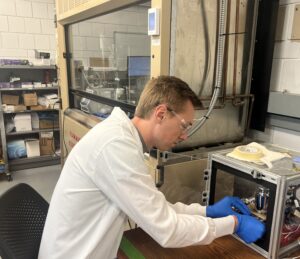
The project aims to determine how different temperature changes affect battery performance, measure the wear and tear under various temperature shifts (TG) and charge/discharge rates (C-rate), and give ideas for making better batteries that last longer. Our study showed that significant temperature differences and high C-rates make batteries age faster, while lower C-rates cause much less damage. These findings underscore the importance of thermal management in battery design and operation. This research fits well with the NASA Space Technology Mission Directorate (STMD) goals by helping make better energy storage systems, which are very important for space missions. The STMD works on creating new and creative technologies to improve how NASA can do its missions. By better knowing thermal gradients in Li-ion batteries, this project helps make energy storage systems work longer and more efficiently. These improvements are significant for long missions and ensure space tools work well in harsh conditions. This directly helps STMD reach its goals to create new ideas and improve technology used in space.
Samantha Austin – Iowa State University
Given NASA’s recent interest in on-orbit servicing (OOS) for malfunctioning satellites and space domain awareness (SDA), the need to accurately estimate the shape and kinematics of noncooperative objects (NCOs) is increasing. Previously, numerous vision and LIDAR-based approaches have been developed to resolve relative navigation issues between the spacecraft and nearby NCOs, but they are not compatible with NCOs with unknown shapes. Through researching numerous studies, we concluded that there is a need to increase operational flexibility and efficiency with relative navigation for NCOs, with particular emphasis on cases where basic information about the target’s shape was deformed or lacking and only part of NCOs could be observed by a single, fixed LIDAR. 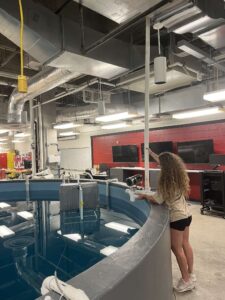 The automotive industry has implemented 2D LIDAR-based Extended Target Tracking (ETT) to estimate the shape and kinematics of NCOs based on a point cloud generated over time. To be useful in the space technology application, this idea needs to be extended to the 3D scope. This has been attempted through the implementation of Gaussian processing and other methods, but there are drawbacks such as limitations from computational complexity that make them impractical for space technology. We propose that real-time estimation is possible in 3D ETT Technology using a relative navigation filter using the Multiplicative Extended Kalman Filter (MEKF) formulation. The MEKF takes the LIDAR point clouds and reconstructs the target’s shape to show its position and kinematic state. This can be done without a need for an observation period, prior knowledge of target geometry, or navigational cooperation.
The automotive industry has implemented 2D LIDAR-based Extended Target Tracking (ETT) to estimate the shape and kinematics of NCOs based on a point cloud generated over time. To be useful in the space technology application, this idea needs to be extended to the 3D scope. This has been attempted through the implementation of Gaussian processing and other methods, but there are drawbacks such as limitations from computational complexity that make them impractical for space technology. We propose that real-time estimation is possible in 3D ETT Technology using a relative navigation filter using the Multiplicative Extended Kalman Filter (MEKF) formulation. The MEKF takes the LIDAR point clouds and reconstructs the target’s shape to show its position and kinematic state. This can be done without a need for an observation period, prior knowledge of target geometry, or navigational cooperation.
Ashley Koenigs – DMACC
Across the county, I plan to find several locations to collect water samples to test for various water quality factors such as pH, turbidity, dissolvable oxygen, nitrates, and phos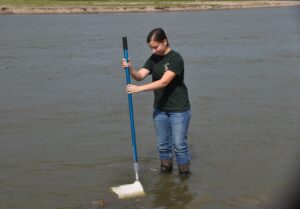 phates. I will also use a biotic index to determine the diversity of indicator species of macroinvertebrates to consider when determining overall ecosystem health. My main goal with this project is to look into the effects of neighboring land use on aquatic ecosystem health. Especially here in Iowa, where agriculture plays a significant role in the environment, I would like to use the data collected from this study to see how much of a role agricultural runoff has on waterways versus, for example, urban runoff. Over the initial fall semester, I intend to take several water samples and biotic index readings across these designated locations to see how they change over the span of a few months. I believe this will be particularly insightful, considering that some of this project will take place throughout the harvest season when additional agricultural runoff will be present. This project aligns with the Science Mission Directorate. This mission directorate’s goal of helping to protect our planet and better understand it directly relates to my project’s goals, which will help provide useful data regarding the impact of land usage on aquatic ecosystem health.
phates. I will also use a biotic index to determine the diversity of indicator species of macroinvertebrates to consider when determining overall ecosystem health. My main goal with this project is to look into the effects of neighboring land use on aquatic ecosystem health. Especially here in Iowa, where agriculture plays a significant role in the environment, I would like to use the data collected from this study to see how much of a role agricultural runoff has on waterways versus, for example, urban runoff. Over the initial fall semester, I intend to take several water samples and biotic index readings across these designated locations to see how they change over the span of a few months. I believe this will be particularly insightful, considering that some of this project will take place throughout the harvest season when additional agricultural runoff will be present. This project aligns with the Science Mission Directorate. This mission directorate’s goal of helping to protect our planet and better understand it directly relates to my project’s goals, which will help provide useful data regarding the impact of land usage on aquatic ecosystem health.
Zachary Harper – University of Northern Iowa
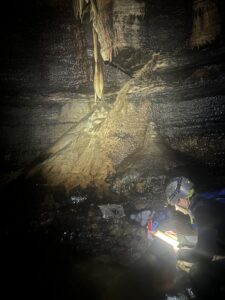 The Coldwater Water Analysis project involves collecting and analyzing water samples taken from Coldwater Creek and from the diverging branch that runs within Coldwater Cave. Over the summer months, samples are being taken from five sites from the surface stream and thirteen sites within Coldwater Cave. The samples are being used to compare the water quality of the surface stream before and after the surface and subterranean streams reunite at the Coldwater State Preserve. The main goal of the project is to calculate the Water Quality Index of the stream. The saturation index of the water flowing within the cave will also be calculated at the end of the summer to understand whether the ground waters and tributary streams are actively dissolving pre-existing carbonates or if the waters are actively depositing fresh carbonates. The data being collected provides insights for the water mixing models in caves and corresponding streams that could provide insights into the interstellar lakes of the icy moons of the gas giants of the solar system. Moving into the fall, we plan to expand the sampling to other streams within the Coldwater Caves watershed and begin comparing that data to water collected from similar karst systems such as Wind Cave National Park and Mystery Cave State Park.
The Coldwater Water Analysis project involves collecting and analyzing water samples taken from Coldwater Creek and from the diverging branch that runs within Coldwater Cave. Over the summer months, samples are being taken from five sites from the surface stream and thirteen sites within Coldwater Cave. The samples are being used to compare the water quality of the surface stream before and after the surface and subterranean streams reunite at the Coldwater State Preserve. The main goal of the project is to calculate the Water Quality Index of the stream. The saturation index of the water flowing within the cave will also be calculated at the end of the summer to understand whether the ground waters and tributary streams are actively dissolving pre-existing carbonates or if the waters are actively depositing fresh carbonates. The data being collected provides insights for the water mixing models in caves and corresponding streams that could provide insights into the interstellar lakes of the icy moons of the gas giants of the solar system. Moving into the fall, we plan to expand the sampling to other streams within the Coldwater Caves watershed and begin comparing that data to water collected from similar karst systems such as Wind Cave National Park and Mystery Cave State Park.
